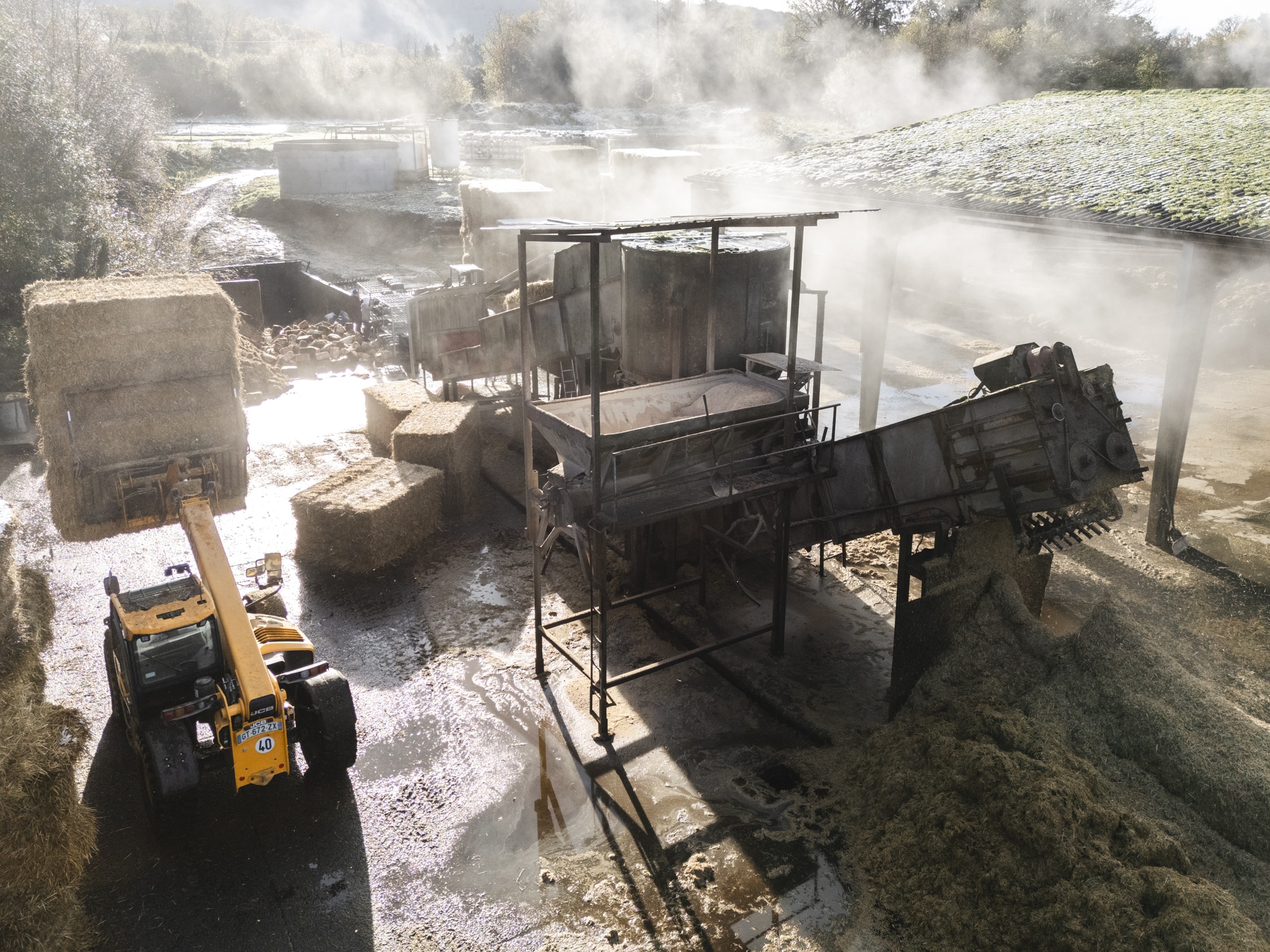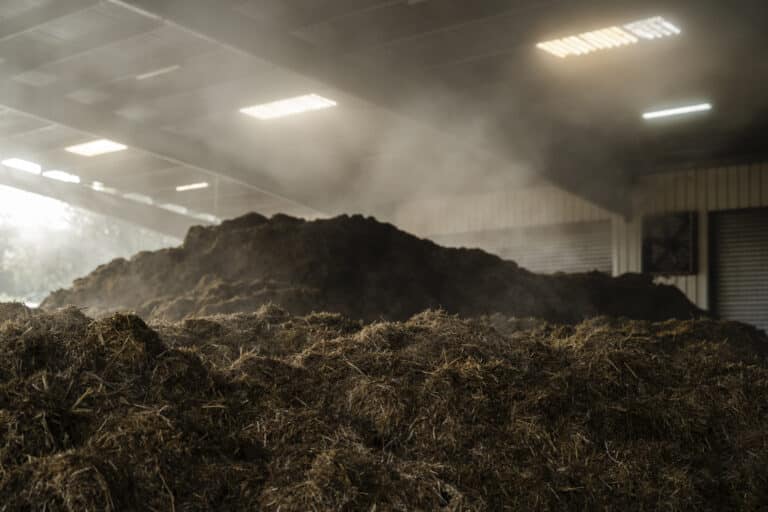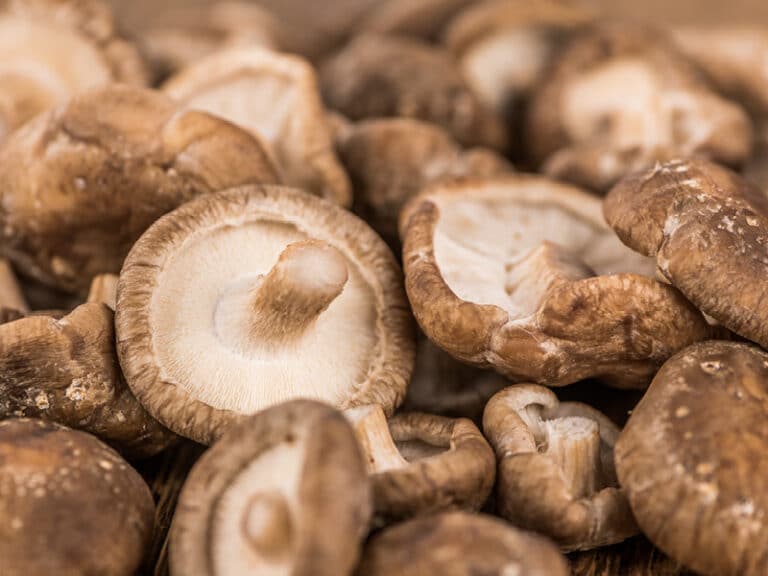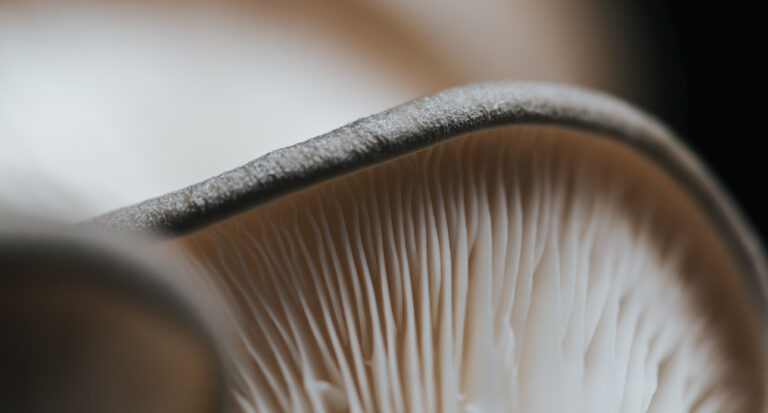Cultivating grey oyster mushroom on a professional scale requires more than just mycological know-how: you also need to have an oyster mushroom cultivation equipment appropriate professional grey to create optimum conditions for fruiting and manage production cycles efficiently. From substrate treatment to harvesting, incubation and fructification, each stage can be made easier and safer with the right equipment. In this article, we will review the main equipment that a professional oyster mushroom grower should consider. We'll look at the infrastructure of the growing rooms (air-conditioned fruiting chambers), the environmental control systems (humidification, ventilation, temperature control), the growing supports (shelves, hanging baskets), and the tools for preparing the substrate if you make it in-house (grinders, pasteurisers or autoclaves). We won't forget the ancillary but crucial equipment: cleaning and disinfection devices for hygiene, equipment for storing and packaging crops, and safety equipment for staff (particularly with regard to spores). The aim is to provide a comprehensive technical guide, in a tone that is both educational and preciseTo help professionals (or serious project owners) design and set up their grey oyster mushroom houses using high-performance tools. A well thought-out installation is the key to ensuring high, regular yields, while minimising effort and risk.
Specific requirements for growing oyster mushrooms
Before listing theequipment professional grey oyster mushroom cultivationA quick reminder requirementsThese are the factors that dictate the choice of equipment:
- This fungus needs a certain level of cleanliness/hygiene to avoid contamination.
- It develops on a lignocellulosic substrate (pasteurised straw, wood, etc.), which must be suitably prepared (crushed, moistened, sterilised or pasteurised, seeded).
- Theincubation (colonisation of the substrate by the mycelium) is carried out in a closed bag, at a relatively high temperature (~20-25°C) and in a controlled environment (no light, good hygiene, sometimes enriched with CO₂ to avoid early fruiting). Sometimes this stage can be outsourced to a supplier (incubated substrate).
- The fruit-bearing (mushroom growth) takes place in a cool environment (~15-18 °C for pleurotus ostreatus), with High humidity (~90%), good ventilation to evacuate the CO₂ and bring in O₂, and a little light.
- Grey oyster mushroom production can be very fast (1st harvest in 7-10 days after fruiting) and the mushrooms grow in clusters that need to be harvested quickly. There are many manual work potential (moving bags, harvesting, etc.), so theprofessional grey oyster mushroom cultivation equipment can help reduce drudgery.
Explore the performance of our substrates!
As part of our quality of service, we offer technical support by appointment on site or by telephone.
With this in mind, the equipment can be divided into several categories:
- Equipment for growing professional grey oyster mushrooms for preparing the substrate (if you do it yourself).
- Professional grey oyster mushroom cultivation equipment for incubation (rooms, racks).
- Professional grey oyster mushroom cultivation equipment for fruiting (climate-controlled growing rooms).
- Professional grey oyster mushroom cultivation equipment for health and safety.
- Professional grey oyster mushroom cultivation equipment for harvesting and post-harvest.
We will be looking at each of these aspects in more detail.
Substrate preparation equipment (internal option)
Many oyster mushroom growers now buy ready-to-use incubated substrate, avoiding the time-consuming process of substrate preparation. But if you're thinking of make your own substrateyou'll need robust, specialist equipment:
- Straw chopper / shredder If your substrate base is straw, you'll need to cut it into strands a few centimetres long. A straw chopper (drum knives, hammer mills, etc.) is needed to obtain homogenous chopped straw. This professional grey oyster mushroom cultivation equipment is similar to what farmers use for mulching, and should be able to handle the quantity you need on a daily basis. An alternative is to buy chopped straw or sawdust, but a shredder ensures autonomy and allows you to calibrate the size of the pieces (typically 2-5 cm for oyster mushrooms, to ensure good colonisation).
- High-capacity pasteuriser or autoclave Straw (or other materials such as coffee grounds, etc.) must be cleaned of most of the competing micro-organisms. Two approaches:
- Substrate mixer They generally have to be mixed (for example, pasteurised straw mixed with a little bran or gypsum, or seed mycelium incorporated into the cooled substrate). Doing this by hand with a fork is very laborious and not very homogeneous. Hence the importance of a mixer. This could be a modified concrete mixer, a horizontal ribbon mixer or a rotating drum. The important thing is that it should be made of stainless or galvanised steel (to avoid rusting in this damp environment), be easy to clean and be able to mix gently without crushing the substrate into a slurry. Some mixers are combined with grain mycelium inoculation: spawn bags can be poured into it and it distributes them evenly throughout the mass.
- La pasteurisation Sterilisation: the moistened substrate is heated to ~60-70°C for 8 to 15 hours. This kills mould and most bacteria, but does not sterilise completely. This is often sufficient for straw. This can be done in a pasteuriser This can be a large vat or an isothermal chamber into which steam or hot water is blown. Some even use old insulated shipping containers converted into pasteurisation tunnels. The pasteuriser must be able to hold the volume of substrate you are preparing per batch. For example, a 5 m³ pasteuriser can process around 1000 kg of substrate in bulk.
- La sterilisation heating to 121°C for 1-2 hours (typically). This requires a autoclave (pressurised enclosure) as in laboratories, but in an industrial version (capacity of several hundred litres minimum). Sterilisation is often used for enriched substrates (sawdust + bran) because they are more nutritious and more susceptible to contamination. This is a professional grey oyster mushroom cultivation equipment expensive and energy-intensive, requiring a high-pressure steam generator and safety measures (pressure around 1 bar). They are available in the form of large horizontal cylinders (like jar autoclaves, but for substrates).
Explore the performance of our substrates!
As part of our quality of service, we offer technical support by appointment on site or by telephone.
- Bagging machine or substrate press After mixing and seeding, the substrate should be placed in containers for incubation. These may be plastic bags colonisation (generally thick polypropylene, sometimes micro-perforated) or bottles/bins depending on the method, but the bag is the most common for oyster mushrooms. Filling the bags with a shovel is feasible for small volumes, but for large quantities, we use tricks: either a small screw conveyor which fills the bags, or a pneumatic press which pushes the substrate into the bag, compacting it slightly (known as a "baling press"). For example, there are facilities for making "15 kg bales of straw automatically compacted into a bag, which improves settlement density and ergonomics (rigid bag). This type of machine greatly speeds up conditioning. There also needs to be a way of close the bags : clamps, plastic ties, heat sealer for autoclavable bags, etc., depending on your process.
- Sterile plating chamber If you inoculate the mycelium yourself into the sterilised substrate, you will need a sterile workstationtypically a laminar flow hood or at least a small, very clean room with HEPA filter, UV, etc., to handle the spawn and mix it without contamination. This is more critical for sterile substrates (sawdust + bran) than for pasteurised straw, which is often done in more rustic conditions (sometimes seeded directly onto the soil after cooling, as pasteurisation does not require absolute sterility). But the cleaner the seeding, the less waste you'll have afterwards. So, from good hygiene protocols and potentially a dedicated space (small "clean room") with at least one laminar flow to sow.
This whole 'substrate preparation' part represents a substantial investment and is relatively technical. That's why many professionals turn to buying ready-made substrates. But if your strategy is to be self-sufficient, this equipment quickly becomes essential if you are to keep up with the pace of production. It will enable you to produce a quality substrate, in volume, with less labour and better control of the process.
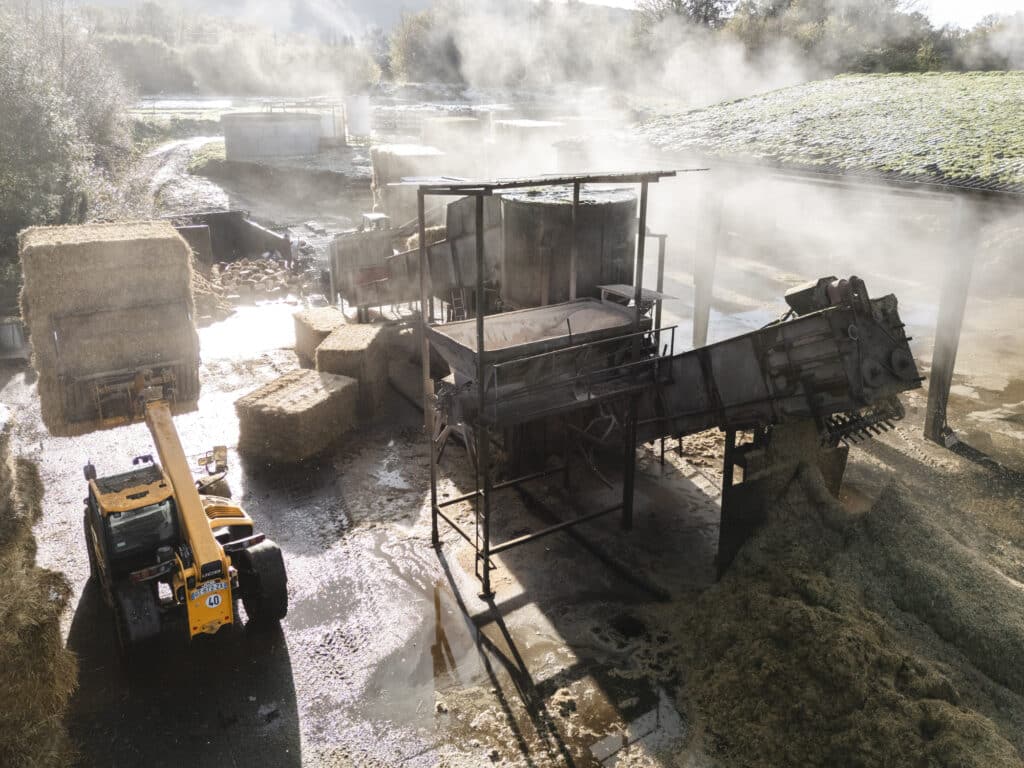
Incubation and culture facilities
Whether you make your own substrate or receive it incubated, you will need premises equipped for incubate (if the substrate is not yet colonised) and above all for grow your oyster mushrooms. A distinction is often made between :
- Incubation rooms (colonisation phase, no light, moderate heat, little air)professional grey oyster mushroom cultivation equipment apart from temperature).
- Fruiting rooms (mushroom cultivation phase, requiring greater climate control).
In some cases, growers don't have an incubation room at all if they buy substrate that is already incubated. Others incubate their bags on site for ~3-4 weeks and then move them to the fruiting room.
Explore the performance of our substrates!
As part of our quality of service, we offer technical support by appointment on site or by telephone.
Incubation chamber (warm room)
Goal Leave the substrate bags/blocks to colonise the mycelium under optimum conditions.
professional grey oyster mushroom cultivation equipment typical :
- Insulation and heating A thermally insulated room (or container, or room) maintained at the desired temperature (generally around -20°C). 20-24 °C for grey oyster mushrooms). Heating can be provided by a simple electric or fan heater, as this is moderate. The heat given off by the mycelium itself also helps (en masse, an oyster mushroom incubation gives off CO₂ and heat).
- Moderate ventilation : Unlike fruiting, incubation does not need a lot of fresh air. On the contrary, an atmosphere a little high in CO₂ is not troublesome and can even prevent fruiting too early. So we'll just have a slight ventilation to prevent the build-up of humidity or excessive heat in places, and to renew the air from time to time. A small timed extractor fan or passive air intake is often all that's needed. There's no need for foggers or active humidification, as the bags are closed and retain their humidity.
- Bag holder : The bags need to be stored for these 2-3 weeks. We often use metal shelves (typically modular galvanised shelves) on several levels where the bags are stored side by side. They can also be placed on pallets, but be careful that they don't overheat in the middle of an overcrowded pallet. It's better to space them out a little. Some people let the bags incubate on the floor in a heap, but this is risky for homogeneity. So, installing racks or shelves allows you to save space vertically and to keep things tidy. Remember that the room must be easy to clean The shelves are removable, the walls are smooth and the floor is washable painted concrete.
- Darkness No need for a lot of light in an incubation room for grey oyster mushrooms; on the contrary, we avoid putting any in so as not to stimulate pinning. So no windows, or blacked out windows. Normal lighting (neon) just so that you can see when you come in and check, that's all.
- Control All you need is a simple wall-mounted thermometer/hygrometer to monitor ambient temperature and humidity. No need for very complex automatic controls. Sometimes a thermostat on the heating if it's not manual. We're aiming for an atmosphere own and stable. The door to the incubation room can be fitted with a filter (mosquito net or G4 filter) on the air intake to limit the entry of spores or insects, as this is an area we want to be fairly aseptic.
Explore the performance of our substrates!
As part of our quality of service, we offer technical support by appointment on site or by telephone.
Fruiting chamber (cool room or "controlled climate")
This is where most of theprofessional grey oyster mushroom cultivation equipment. The fruiting chamber is thespace where the oyster mushrooms will grow. The aim is to recreate an environment similar to an autumn rainforest, but in a controlled way.
Key equipment :
- Thermal insulation and damp-proofing The room must be well insulated to maintain a cool temperature without heat loss (especially if it's warmer outside). Walls and ceilings should ideally be made of insulated sandwich panels (typical of cold rooms) or covered with insulating foam. What's more, these surfaces must be watertight, as the humidity will become saturated. We therefore use materials such as PVC, tiles, epoxy resin on walls and floors to allow watering/cleaning without damage. The electrical installation must comply with wet environment standards (IP65 minimum). A sloping floor and a drain are strongly recommended as condensation or cleaning water will have to run off.
- Cooling/heating system : To maintain the ideal temperature (~18°C), a system of air conditioning or cooling is often necessary, especially in summer. Many mushroom growers use HVAC cooling unit sized for the size of the room. An industrial air conditioner (monobloc or split) capable of providing cooling even when humidity is high. Sometimes an exchanger connected to an air handling unit is used. In winter, on the other hand, it may be necessary to heat the room a little so as not to drop below 12°C. A electric heating or unit heater may suffice. Some systems combine the two (reversible heat pumps).
- Humidification To achieve and maintain 90-95% of humidity, we use either ultrasonic fog generatorsor high-pressure misting systems with fine nozzles. Ultrasonics are suitable for medium volumes, while HP foggers are suitable for larger rooms and offer more power. The humidifier must be made of non-corrosive material (very fine water can attack). One or more circulation fans are often used to distribute the humidity evenly. A hygrostat (humidity sensor) controls the humidifier and triggers it to maintain the level. The aim is to achieve very high humidity without excessive condensation. The floor can be kept wet or with extra damp gravel, but automatic regulation is more reliable for consistency.
- Ventilation/Air extraction : This is crucial for oyster mushrooms because of the spores and CO₂ they produce. You need a fresh air extraction system ideally sized to renew the air in the room several times an hour. Typically, one or two extractors driven by a CO₂ controller or by timer. Extraction is often combined with humidification, as extracting humid air continuously can be drying. The trick is to inject fresh air (via a fan and ducting) while misting to conserve humidity. A control system a little more advanced can control the frequency of extractions (e.g. full ventilation for 5 minutes every 30 minutes, etc., or continuous but modulated). Filtering incoming air is desirable (to prevent it carrying contaminants or insects): a air intake filter can be installed. The extracted air, which is rich in spores, should ideally be discharged outside, away from air inlets, to avoid recontamination. A net or an extractor with water tray to trap some of the spores so they don't get deposited all over the place outside (also useful for keeping the surrounding area clean, as oyster mushroom spores make a fine white dust).
- Shelves or support system How do you arrange your substrates in the grow room? Two common methods:
- Visit fixed shelves Mushroom cultivation: we build cultivation racks on 2 to 4 levels, in stainless or galvanised steel. On each level, we line up the bags/blocks, which we open or cut to let the mushrooms out. It's a bit like growing beds. Access to the upper levels is via a stepladder if necessary. This system maximises the use of the room's volume. Be careful not to pack the bags too tightly, otherwise the mushrooms will run out of space.
- Visit suspension To grow oyster mushrooms: hang each bag individually from a hook on ropes or on a ceiling support. The oyster mushrooms will grow all around the bag. This improves air circulation around each block, and potentially makes harvesting easier (each bag isolated). On the other hand, it can be less dense than shelves. You could think of a gantry-style structure where the bags hang. This is often used for pink or yellow oyster mushrooms too. For larger volumes, shelves are more common. In all cases, these supports need to be sturdy (a water-saturated bag can weigh 15 kg and there are dozens or even hundreds of them), resistant to corrosion (a damp environment + fungus = corrosive), and cleanable (avoid untreated wood).
- Lighting Oyster mushrooms need minimal lighting (a few hours of diffuse light a day). You'll need lamps that can withstand humidity. Visit waterproof LED neon lights or low-intensity horticultural lamps will do the trick. You should aim for around 8 to 12 hours of light a day, of the order of 100 to 300 lux at crop level (you don't need much). You can use a timer to automate the day/night cycle. Lighting should be evenly distributed to avoid certain areas receiving no light (otherwise paler mushrooms or hats turned towards the light sources).
- Control panel : To manage all this, a climate control unit or a set of timed thermostats/hygrostats is required. For a professional room, the ideal solution is a PLC connected to the sensors (temperature, humidity, CO₂) which controls the actuators (humidifier, extractors, air conditioner, heating, light). The setpoints can be calibrated (e.g. 18°C, 90%RH, CO₂ < 800 ppm). This type of controller (arduino pro type, or commercially available solutions for mushroom houses or greenhouses) may seem like a gadget, but it provides great environmental stability and frees up time (no need for constant manual adjustment). Otherwise, at the very least, independent thermostats and hygrostats will do a decent job.
- Spores measurements (optional) : In the case of grey oyster mushrooms, spore production can saturate the air at the end of the flush. There is no "sporestat" like a thermostat, but you can see it because everything whitens around it. Some growers invest in air filtration systems in the room to protect workers (extractors with filters, for example). This is not compulsory, but in an intensive environment it should be considered. Otherwise, at least provide filter masks to staff during harvesting to avoid allergies to spores.
Explore the performance of our substrates!
As part of our quality of service, we offer technical support by appointment on site or by telephone.
Together, this infrastructure makes the fruiting chamber a Genuine air-conditioned enclosure. You can think of it as an inverted high-tech greenhouse (cooling instead of heating, humidifying instead of drying).
Of course, the size and configuration of theprofessional grey oyster mushroom cultivation equipment depends on the scale of production. A small artisanal mushroom farm will be able to get by with a simple air-conditioning unit, a domestic fogger and a bathroom extractor, while an industrial farm will have air-handling units occupying a separate room. The important thing is to understand the principles and apply them proportionately.
Hygiene and safety equipment
Working with an organism that lives in a very humid environment requires compliance with hygiene rules, both to avoid contamination of the crops and for the safety of the workers.
Premises hygiene :
- High-pressure cleaners After each production cycle (e.g. every 6-8 weeks when used bags are removed), the following must be done cleaning and disinfecting grow rooms. A karcher or high-pressure cleaner is very useful for removing debris and washing shelves, walls and floors. It saves time and gets into nooks and crannies by spraying hard. For best results, use hot water if possible.
- Disinfection : Have a sprayer (manual or electric) to apply an disinfectant (such as diluted bleach, hydrogen peroxide, food-grade ammonium quaternary) on surfaces after washing. Some use ULV cannons or foggers to diffuse a disinfectant mist throughout the room, killing any residual spores. This can be an external service, or a fixed fogger can be purchased. The floor of the incubation room can also be treated in this way. The idea is to breaking the cycle of contaminants between two lots.
- Soaking tanks : Useful to have bins or dustbins filled with bleach solution to soak tools or even boots at the entrance to the room (foot bath). Also for washing harvesting knives.
- Industrial hoovers Paradoxically, in a mushroom house, a wet/dry hoover can be used to suck up dry spores or stagnant water after cleaning. It should be made of plastic/stainless steel (water-resistant).
- Dedicated workwear : On this point, it's not a "professional grey oyster mushroom cultivation equipment"But it's important for workers to wear protective clothing. dedicated outfits (coveralls or blouse) and rubber boots in the rooms, and ideally wash their hands or wear gloves when handling the substrate. This avoids introducing contaminants from outside.
Explore the performance of our substrates!
As part of our quality of service, we offer technical support by appointment on site or by telephone.
Staff safety :
- Respiratory protection Grey oyster mushrooms release large numbers of white spores during sporulation. In large doses, these spores can cause respiratory irritation or even allergies (mushroom farmer's lung syndrome). Intensive oyster mushroom growers are often well aware of this. To avoid this, as well as ventilating the room, employees are advised to wear dust masks (FFP2 or FFP3 standard) during harvesting or cleaning, when spores are present. This simple piece of personal equipment can prevent many health problems.
- Gloves and sleeves Oyster mushrooms are not dangerous to the touch, but chemicals (bleach, etc.) are used during cleaning and sharp metal surfaces may be encountered. From waterproof gloves and possibly arm guards or sleeves to prevent chafing and injury.
- Emergency lighting The rooms are closed and damp, so make sure you have a dryer. emergency lighting or at least a torch available in the event of a power cut, so that you can get out or finish the tasks in hand. An alarm can be installed to signal a breakdown in the air conditioning system (if the system is switched off, the temperature rises quickly and can damage everything).
- Ergonomics This term covers the idea of making work easier to avoid accidents or excessive fatigue. For example, using rolling carts to move sacks or crops (avoid carrying 15 kg several metres by hand). Install pulleys or winches if you have to lift bags to the top shelves. Provide sturdy stepladders to reach the higher levels in complete safety.
- Anti-slip The floor of the rooms is wet and can be slippery. The application of floor paint with anti-slip grain or the use of plastic gratings can prevent falls. Boots should also have grippy soles.
- Ventilation of premises : Beyond the growing room, the whole mushroom house needs to be sufficiently ventilated so that workers are not in air that is saturated with CO₂ or too humid all the time. Often, general ventilation of the building is required.
Post-harvest management and ancillary equipment
Once the oyster mushrooms have been harvested, theprofessional grey oyster mushroom cultivation equipment still plays a role in ensuring quality right up to the point of sale:
- Cold storage room Fresh oyster mushrooms keep well at 2-4°C for a few days. It is recommended to have a fridge or cold room to store the day's harvest before shipping or selling. Depending on your volume, this could be a large hotel fridge or a cold room. It's not specific to mushrooms, but it's essential for managing just-in-time logistics.
- Sorting and packaging table After harvesting, the oyster mushrooms can be sorted, any residual substrate removed, graded and then placed in crates or trays. A stainless steel table makes the job easier (cleanable). You can have a small weighing and bagging system (scale, filming or sealing machine if film-wrapped trays).
- Transport equipment Openwork plastic boxes, crates, etc., for shipping mushrooms. This is notprofessional grey oyster mushroom cultivation equipmentBut it's an extension. The same goes for a possible refrigerated vehicle if you deliver to customers yourself.
- Waste management What do you do with used substrates and waste water? You need to plan how to dispose of the used bags: a space to store them, a small tractor or forklift to move skips of substrates, etc. Some people invest in a shredder to empty the bags more quickly (a machine that opens the bags and takes out the substrate). Otherwise, the blocks are taken out manually and sent for external composting or given to a farmer. Having skips, bins, big bags to store organic waste awaiting disposal is useful. As regards cleaning waste water, make sure there is a drain connected to the sewage system or an appropriate septic tank (mostly organic water). For disposal, some people use a conveyor or a worm screw which automatically takes the substrates out of the building and loads them into a skip. It's highly mechanised, but it does exist.
- Monitoring and management : It's more immaterial, but having a computer or a notebook for monitor crop parameters (temperatures recorded, hygrometry, dates of introduction of substrates, harvested weights, etc.) is part of the intellectual equipment. Today, there are connected solutions (IoT sensors that send data to smartphones, etc.). Investing in these monitoring tools can help to optimise over time (detecting that a pump is weakening, that a variety is taking longer, etc.). These are modern features that are becoming increasingly common in professional mushroom houses.
All in all, theprofessional grey oyster mushroom cultivation equipment covers a wide range, from large industrial machines to small everyday tools. The investment needs to be calibrated to your scale of production and your strategic choice (make or buy the substrate). But even small-scale production will benefit greatly from some basic equipment, such as a good air-conditioned growth chamber, an efficient humidifier, stainless steel shelves and a karcher to clean everything.
Explore the performance of our substrates!
As part of our quality of service, we offer technical support by appointment on site or by telephone.
Conclusion: invest in the right equipment for sustainable production
Professional cultivation of grey oyster mushrooms requires the following conditions professional grey oyster mushroom cultivation equipment suitable. The initial investment is well worth it: the aim is to guarantee optimum growing conditions, increase yields, reduce losses and make the operators' day-to-day work easier. Well-chosen and well-maintained equipment means less stress and greater productivity in the long term.
Of course, every farm is unique. Theprofessional grey oyster mushroom cultivation equipment The ideal solution will depend on the size of your facility, your budget, whether or not you choose to produce the substrate, and even the local climate (cooling requirements will be lower in the mountains than on the Mediterranean plains, for example). It is therefore essential to design a customised installation planby drawing on the tried and tested solutions described in this article.
Don't hesitate to seek the advice of experts or other mushroom growers during the design phase. Substrate suppliers (such as EUROSUBSTRAT CALLAC) or agricultural equipment suppliers can often provide advice, or even standard plans for mushroom houses. There are also specialist consultancies to design the HVAC (heating-ventilation-air-conditioning) systems for your rooms. Every euro well invested in a reliable humidifier or good insulation will be returned to you in extra quintals of oyster mushrooms and hours of work saved.
Similarly, don't underestimate the importance of health and safety A workplace accident or widespread contamination costs infinitely more than the purchase of a few items of PPE (personal protective equipment) or a high-performance cleaning system. Putting in place protocols and tools for easy cleaning and disinfection from the outset will ensure the longevity of your production unit and the health of your team.
In conclusion, mastering the cultivation of oyster mushrooms also means mastering the technical environment. Well-equipped rooms are the guarantee of a controlled productionregular and profitable. With a good professional grey oyster mushroom cultivation equipmentIn addition, the grower can concentrate on monitoring the biology of his mushrooms, improving his methods and looking for outlets, rather than fighting temperature or mould problems caused by inadequate tools.
If you're just starting up, make a prioritised list of the equipment you need to acquire, distinguishing between the essentials (e.g. hygrometer, humidifier, ventilation), the comforts (e.g. state-of-the-art automatic control system) and the long term (e.g. substrate emptying hopper). You'll be able to plan your investments in phases, reinjecting part of the revenue into the ongoing improvement of your facility.
Finally, remember that l'professional grey oyster mushroom cultivation equipment is not everything It's how you use it that counts. Train yourself (and your staff) to use each piece of equipment properly, to understand its role. A poorly placed sensor or neglected humidifier nozzle cleaning can render the best system ineffective. Technology should serve your expertise, not the other way round.
By combining quality infrastructures and a advanced mycological know-howWith EUROSUBSTRAT CALLAC, you give yourself every chance of making your oyster mushroom production prosper. EUROSUBSTRAT CALLAC, as a partner of mushroom professionals, remains at your disposal to discuss good equipment and cultivation practices: based on our experience in the field, we know how much good equipment can transform a farm and make life easier for mushroom growers. Don't hesitate to contact us if you have any questions or need advice - we'd be delighted to contribute, however modestly, to the development of your mushroom farm.
With a well-equipped growing environment, your oyster mushrooms will thrive in abundance... and so will your business! Happy cultivation to all, and may technology help you harvest the best quality oyster mushrooms, to the delight of your customers and the satisfaction of a job well done.
Explore the performance of our substrates!
As part of our quality of service, we offer technical support by appointment on site or by telephone.

